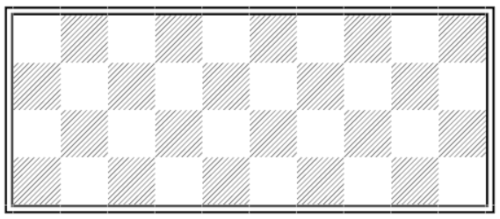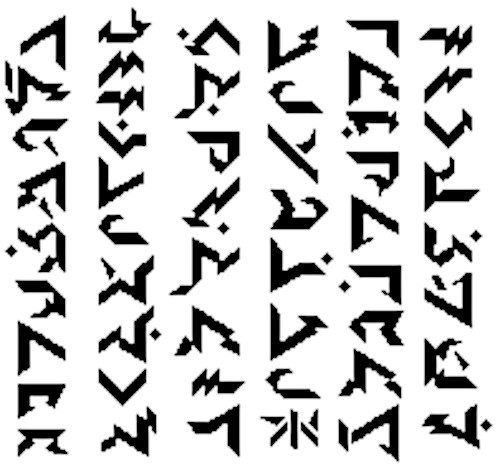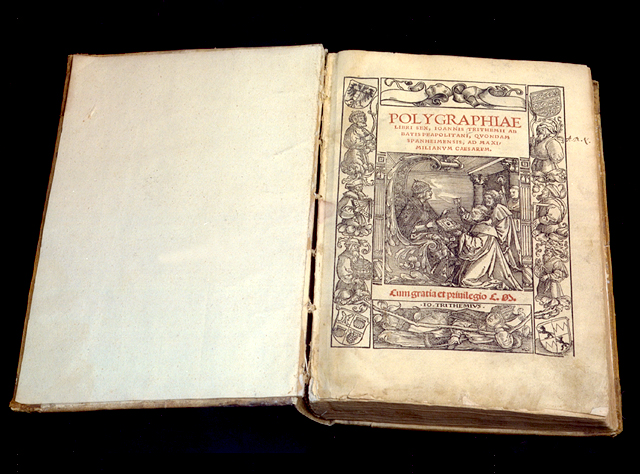Add the same three letters, in order, both before and after the following to make a familiar English word:
ERGRO
Add the same three letters, in order, both before and after the following to make a familiar English word:
ERGRO

In 1980, after 30 years of drawing Beetle Bailey, comic artist Mort Walker published The Lexicon of Comicana, a lighthearted meditation on the many conventions that a reader of comic strips is expected to understand. He calls it a lexicon because he’s made up names for all of them:
More: a light bulb represents an idea, Zs (or a saw cutting a log) represent snoring, distant birds are inverted Ws, patches denote poverty, all bones are the same shape, all new things have price tags, all injuries require bandages, all paint cans bear drippings. Who invented all these conventions, and how did we all learn to observe them?

Can a chess knight visit every square on a board with 4 rows by a series of successive moves?
No, it can’t, and Hungarian mathematics prodigy Louis Pósa proved this while still in his early teens. Suppose that such a tour is possible. Then, on any board bearing the standard checkerboard pattern, the knight will land alternately on white and black squares. But now imagine that the board’s top and bottom rows have been colored red and the middle two rows are blue. Now a knight on any red square must jump to a blue square, and because the board has an equal number of red and blue squares, any knight on a blue square must jump to a red one (if it visits two blue squares in a row, it won’t be able to make up for this later by visiting two red ones in a row). So the knight’s tour on any 4 × n board must alternate strictly between red and blue squares.
“But this is impossible,” notes Colorado College mathematician John J. Watkins. “The same knight’s tour alternated between white and black squares in the one coloring, and between red and blue squares in the other coloring, which would mean the two color patterns must be the same, which of course they aren’t. Isn’t that a clever proof, especially for a teenager to discover?”
(John J. Watkins, Across the Board, 2004. Pósa’s proof is given more rigorously here, and it’s also presented in Ross Honsberger’s 1973 book Mathematical Gems.)
UPDATE: It’s important to note that it’s a “closed” knight’s tour that’s impossible — that’s one that ends where it began. An open tour, which can end anywhere, is possible — it breaks Pósa’s proof because it need not alternate strictly between red and blue squares. Thanks to reader Marjan Milanović for pointing this out.
On June 17, 1794, Charles-Henri Sanson, high executioner of the First French Republic, guillotined more than 50 “conspirators” in 28 minutes, including an 18-year-old girl who seemed so fragile that “a tiger would have pitied her.” That night he wrote in his diary:
Terrible day. The guillotine devoured 54. My strength went, my heart failed me. That evening, sitting down to dinner, I told my wife that I could see spots of blood on my napkin. … I don’t lay claim to any sensibility I don’t possess: I have seen too often and too close up the sufferings and death of my fellow human beings to be easily affected. If what I feel is not pity it must be caused by an attack of nerves; perhaps it is the hand of God punishing my cowardly pliancy to what so little resembles that justice which I was born to serve.
(Quoted in Frances Larson, Severed, 2014.)
A problem from the National Bank of New Zealand Competition 2000, via Crux Mathematicorum, November 2006:
Humanity is visited by three alien races, the Kweens, the Ozdaks, and the Merkuns. Kweens always speak the truth, and Ozdaks always lie. In any group of aliens, a Merkun never speaks first; when it does speak, it tells the truth if the previous statement was a lie and lies if the previous statement was truthful. The three alien races can tell one another apart, but to humans they all look the same. A delegation of three aliens visits Earth. At least one of them is a Kween. When they arrive they make the following statements, in order:
First alien: The second alien is a Merkun.
Second alien: The third alien is not a Merkun.
Third alien: The first alien is a Merkun.
Which aliens can we be sure are Kweens?

Linguist John Quijada designed the experimental language Ithkuil to permit “maximal communication in the most efficient manner”: Cognition processes far more information than natural languages typically express, and natural languages are full of vagueness and ambiguity; Ithkuil tries to express deep levels of cognition precisely while making the speaker’s intent clear.
The results can be striking. The 19-word English phrase “On the contrary, I think it may turn out that this rugged mountain range trails off at some point” can be expressed in two words in Ithkuil. And the passage above reads “As our vehicle leaves the ground and plunges over the edge of the cliff toward the valley floor, I ponder whether it is possible that one might allege I am guilty of an act of moral failure, having failed to maintain a proper course along the roadway.” And both of these expressions indicate the speaker’s full intent directly, where natural languages would tend to leave their full meaning to be inferred.
No one actually speaks Ithkuil — Quijada says he regards it as “an exercise in exploring how human languages could function, not how human languages do function.”
(John Quijada, A Grammar of the Ithkuil Language, 2011.)
[My brother Michael] remembered that I (then between four and five years old) was greatly concerned with petty consistency as the story unfolded, and that on one occasion I interrupted: ‘Last time, you said Bilbo’s front door was blue, and you said Thorin had a golden tassel on his hood, but you’ve just said that Bilbo’s front door was green and that Thorin’s hood was silver’, at which my father muttered ‘Damn the boy’, and then strode across the room to his desk to make a note.
— Christopher Tolkien, recalling a series of Christmas readings in the late 1920s in which The Hobbit took shape, quoted in Christina Scull and Wayne G. Hammond, The J.R.R. Tolkien Companion and Guide: Reader’s Guide, 2006
Entries in the keyword index of C. Bernard Ruffin’s Last Words (1995), a collection of the final utterances of famous people:
Minutes before his death, retired Supreme Court justice Felix Frankfurter told an aide visiting him in the hospital, “I hope I don’t spoil your Washington’s birthday.”

When the 15th-century Benedictine abbot Johannes Trithemius died in 1516, he left behind a three-volume work that was ostensibly about magic — specifically, how to use spirits to send secret messages over distances. Only when the Steganographia and its key were published in 1606 did it become clear that it was really a book of ciphers — the “incantations” were encrypted instructions for concealing secret messages in letters sent between correspondents.
Books I and II were now plain enough, but Book III remained mysterious — it was shorter than the first two books, and its workings were not mentioned in the key that explained the ciphers in those volumes. Scholars began to conclude that it was simply what it appeared to be, a book on the occult, with no hidden content. Amazingly, nearly 400 years would go by before Book III gave up its secrets — Jim Reeds of AT&T Labs finally deciphered the mysterious codes in the third volume in 1998.
It turned out to be still more material on cryptography. But it’s still not clear why Trithemius had couched this third book in magical language. Did he think that his subject was inherently magical, or was he simply trying to enliven a tedious subject? We’ll probably never know. “Trithemius’s use of angel language might … be a rhetorical strategy to engage the reader’s interest,” Reeds writes. “If so, he was vastly successful, even if he completely miscalculated how his book would be received.”
(Jim Reeds, “Solved: The Ciphers in Book III of Trithemius’s Steganographia,” Cryptologia 22:4 (October 1998), 291-317.)
While we’re at it … in 1973 attorney Mark M. Orkin compiled Canajan, Eh?, a lexicon of Canadian English, which he says is distinguished by “a nimiety of neologisms, an impudicity of pronunciation, a crapulence of grammar, a prurience of syntax, and a necrosis of Mare Canisms”:
ardic: the far north, home of the Esk Moze
beinck: a building where Canajans keep their money
dodder: a female child
fishle: duly authorized
gradge: a building for storing or repairing automobiles
hiss tree: study of past events
Knighted States: the Mare Can nation
Pam Sundy: the Sunday before Easter
quorpus: fifteen minutes past the hour
sign tist: person well-versed in a branch of signs
slong: the principal Canajan salutation on parting
Tronna: the cabbidal of Untario
worsh: to cleanse oneself or one’s clothing
zmarra fack: introductory verbal aid
In his introduction, Orkin writes that “forners need exercise no caution in using this text since all terms discussed will be understandable by somebody somewhere in Canada.” He published a companion volume, French Canajan, hé?, in 1975.
Also: Australian, Baltimorese, Texan.